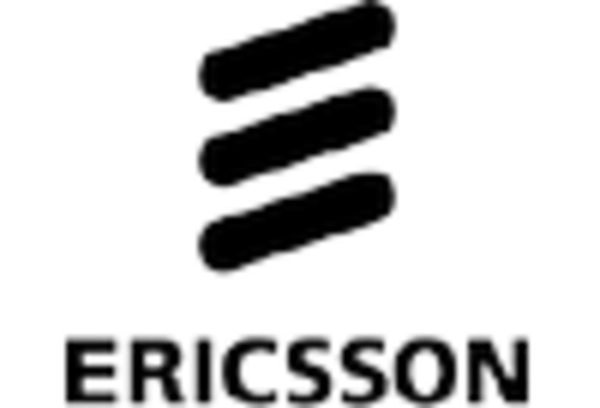Expansion of 5G Networks
The rollout of 5G technology is a pivotal factor influencing the Base Station Antenna Market. As countries invest heavily in 5G infrastructure, the demand for specialized antennas capable of operating at higher frequencies is surging. The 5G rollout is expected to create a market worth over 700 billion USD by 2025, necessitating a substantial increase in base station installations. This expansion is not merely a trend; it represents a fundamental shift in how data is transmitted and received. Antennas designed for 5G must accommodate new technologies such as Massive MIMO and beamforming, which enhance network efficiency and capacity. As a result, manufacturers are innovating to produce antennas that meet these new specifications, thereby driving growth in the Base Station Antenna Market. The competitive landscape is also evolving, with new entrants focusing on advanced antenna solutions.
Emergence of Smart Cities
The development of smart cities is significantly impacting the Base Station Antenna Market. As urban areas evolve to incorporate advanced technologies for improved efficiency and quality of life, the demand for reliable communication networks intensifies. Smart city initiatives often rely on extensive sensor networks and real-time data transmission, necessitating a robust telecommunications infrastructure. This trend is expected to drive the installation of base stations and antennas that can support the high data rates required for smart applications. Moreover, the integration of smart technologies in public services, transportation, and utilities further amplifies the need for enhanced connectivity. As cities strive to become more interconnected, the Base Station Antenna Market is likely to experience substantial growth, driven by the need for antennas that can support diverse applications and high user density.
Rising Demand for Mobile Connectivity
The increasing reliance on mobile devices for communication and data transfer is driving the Base Station Antenna Market. As consumers demand faster and more reliable connectivity, telecommunications companies are compelled to enhance their infrastructure. This trend is evidenced by the projected growth in mobile data traffic, which is expected to reach 77 exabytes per month by 2025. Consequently, the need for advanced base station antennas that can support higher frequencies and greater bandwidth is becoming paramount. This demand is not only limited to urban areas but is also expanding into rural regions, where connectivity is often lacking. The expansion of 5G networks further amplifies this need, as these networks require a denser network of antennas to provide optimal service. Thus, the rising demand for mobile connectivity is a significant driver of growth in the Base Station Antenna Market.
Technological Innovations in Antenna Design
Technological innovations in antenna design are reshaping the Base Station Antenna Market. Advances in materials science and engineering are enabling the development of antennas that are not only more efficient but also more compact and versatile. Innovations such as phased array antennas and software-defined radios are becoming increasingly prevalent, allowing for greater flexibility in deployment and operation. These advancements are crucial as they enable telecommunications providers to optimize their networks for varying demands and conditions. Furthermore, the integration of artificial intelligence in antenna systems is enhancing performance monitoring and management, leading to improved service quality. As the industry continues to evolve, these technological innovations are expected to drive the demand for next-generation base station antennas, thereby propelling growth in the Base Station Antenna Market.
Increased Investment in Telecommunications Infrastructure
Investment in telecommunications infrastructure is a critical driver for the Base Station Antenna Market. Governments and private entities are recognizing the necessity of robust communication networks to support economic growth and technological advancement. In recent years, investments in telecommunications have surged, with estimates suggesting that global spending on telecom infrastructure could exceed 1 trillion USD by 2025. This influx of capital is directed towards upgrading existing networks and deploying new base stations, particularly in underserved areas. The focus on enhancing network reliability and coverage is leading to a greater demand for high-performance antennas. Furthermore, as smart cities and IoT applications proliferate, the need for a reliable telecommunications backbone becomes increasingly vital. Thus, the increased investment in telecommunications infrastructure is propelling the growth of the Base Station Antenna Market.


















Leave a Comment